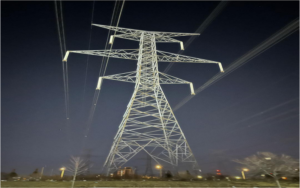Construction materials, also called building materials, are used to build things. Buildings have been made from many things that come from nature, like clay, rocks, sand, and wood. Aside from natural materials, many artificial products are also used. Some of these products are more synthetic than others. We’ve discussed the different kinds of building materials used to make buildings. Check out these lists of names and pictures of building materials.
To ensure a building is safe and lasts a long time, the materials used to build it must be carefully chosen. The definition of “construction materials” is the things used to make things.
Building material is any material that is used for construction, like materials for building a house. The most common building materials are cement, wood, metals, bricks, concrete, aggregates and clay.
These were chosen because they are the most cost-effective for building projects. Buildings have been made from many things that come from nature, like clay, sand, wood, rocks, and even twigs and leaves.
Aside from natural materials, people use a lot of things that people make. Some of these things are more synthetic than others. In many countries, making building materials is a well-established business, and these materials are usually used by different types of trades, such as plumbing, carpentry, roofing, and insulation. Let us look at seven commonly used building materials.
1. Concrete
Concrete is made by mixing cement, aggregates like sand, crushed stone, and water. The mixed design determines the properties of the concrete. Therefore, it is not unusual for companies that supply concrete to mention the qualities of the material as well as the test results for each concrete patch.
Fresh concrete can be poured into any shape or form, and it takes time to harden into a material that looks like stone. It can take up to 7 days for concrete to reach most of its strength, and it will need extra care to cure so it doesn’t crack or lose power. Concrete can be used for many house construction materials, and builders use it when they need a robust and long-lasting material. For example, concrete is an excellent material for building foundations, the parts of a building that touch the ground and support its weight. It would help if you had the strength to carry the weight and the durability to stand up to the soil around you.
Concrete is solid, but when stretched, it breaks easily and doesn’t have much strength. When steel rebar is added to reinforced concrete, it is more robust and better suited for many structures, like tall multi-story buildings, tunnels, roads, bridges, and many other things.
2. Steel
Steel is a metal alloy made of iron, carbon, and sometimes other materials for construction of houses, making it more robust and less likely to break than iron. Because they have more chromium than other steels, stainless steel doesn’t rust or oxidize. Because it is so vital for its size and weight, structural engineers use it to build the framework of tall modern buildings and extensive industrial facilities. Some of the things about it are:
- Steel has a high ratio of strength to weight and a high ratio of strength to size.
- It’s expensive compared to other metals. Structural engineers can help choose the most cost-effective sizes to use in a house to support the actual load on the building.
- Installing steel takes less time than putting in concrete.
- It can be put in place in any setting.
- Corrosion can happen if steel is installed or kept incorrectly.
Chrome, gold, and silver are not as strong as steel, so they are usually used as finishes or decorations.
3. Clay and Mud
Mud is made when silt, loam, soil or clay is mixed with water. It usually forms on its own after a rain near rivers or other water sources. After a while, the mud gets hard and turns into a mudstone.
Mud is a building modern construction material that is half solid and half liquid. It can be used to seal, coat, and stick things together. Mud’s different parts, like stucco , mortar, plaster, slurry, and concrete, give it many other names.
Most of the time, walls, floors, and even roofs are made with a mixture of subsoil, water, stone, gravel, straw, lime, and bitumen. In the past, mud was often used to coat the walls of buildings, build walls, and make mud bricks.
Stabilized mud is a mix of mud and something that holds it together, like bitumen or cement. It is also called soil cement, concrete, and mud concrete.
4. Wood
Wood has a lot of natural advantages over alternatives like plastic and other artificial products. Indians have traditionally built most of their homes out of wood, especially in rural areas. Modern times, wood is also becoming more popular as a building material in cities. Among the benefits are the following:
- High tensile strength—lightweight and longer length that can stand independently.
- Heat and electrical resistance: naturally resistant to construction and heat, giving more stability and safety
- It absorbs sound—Its acoustic properties make it an excellent choice for living in cities and working in them.
- Aesthetic: Again, wood’s natural look is excellent. Also, there are many kinds of wood to choose from, depending on your needs.
But there are some problems with building with wood, such as:
- Deforestation: to get resources, trees have to be cut down.
- Vulnerable to damage—Easy to damage by nature
- High maintenance – requires expensive maintenance
5. Aggregates
In the construction material calculator industry, aggregates are also the most common building materials. Most of the time, aggregates are used to make concrete.
The aggregates give a substantial volume and make it cheap. It is one of the essential parts of concrete. Since aggregates have high conductivity, they are often used in drainage applications like building foundations, septic drain fields, and other drainage works.
Aggregates come in different sizes, but they can mostly be put into two groups: coarse aggregates and fine aggregates.
6. Glass
The fact that glass is fragile is one reason it isn’t used as much in the building. There are different ways that mirrors are used in construction. In commercial buildings, glass is used for windows, walls, and even walls that separate rooms.
A building needs long-lasting and super-strong new material in construction and fragile glass to be weatherproof. Frosted glass, coloured glass, and etched glass are all types of glass with different levels of strength.
7. Fabric
Nomadic groups from all over the world used to live in tents. The cone-shaped teepee and the round yurt are two well-known types. Developing tensile architecture and synthetic fabrics have become a significant way to build again. Modern buildings can be made of flexible materials like fabric membranes and held up by a system of steel cables or internal.
Conclusion
With the emergence of new technologies, advanced construction materials are being put to use that expedite construction and improve the durability of the structure. That’s why buildings of today are able to withstand the vagaries of nature better without losing their elegance and aesthetic appeal.




